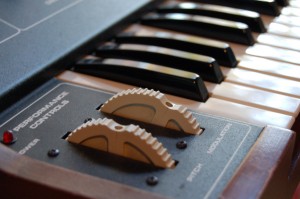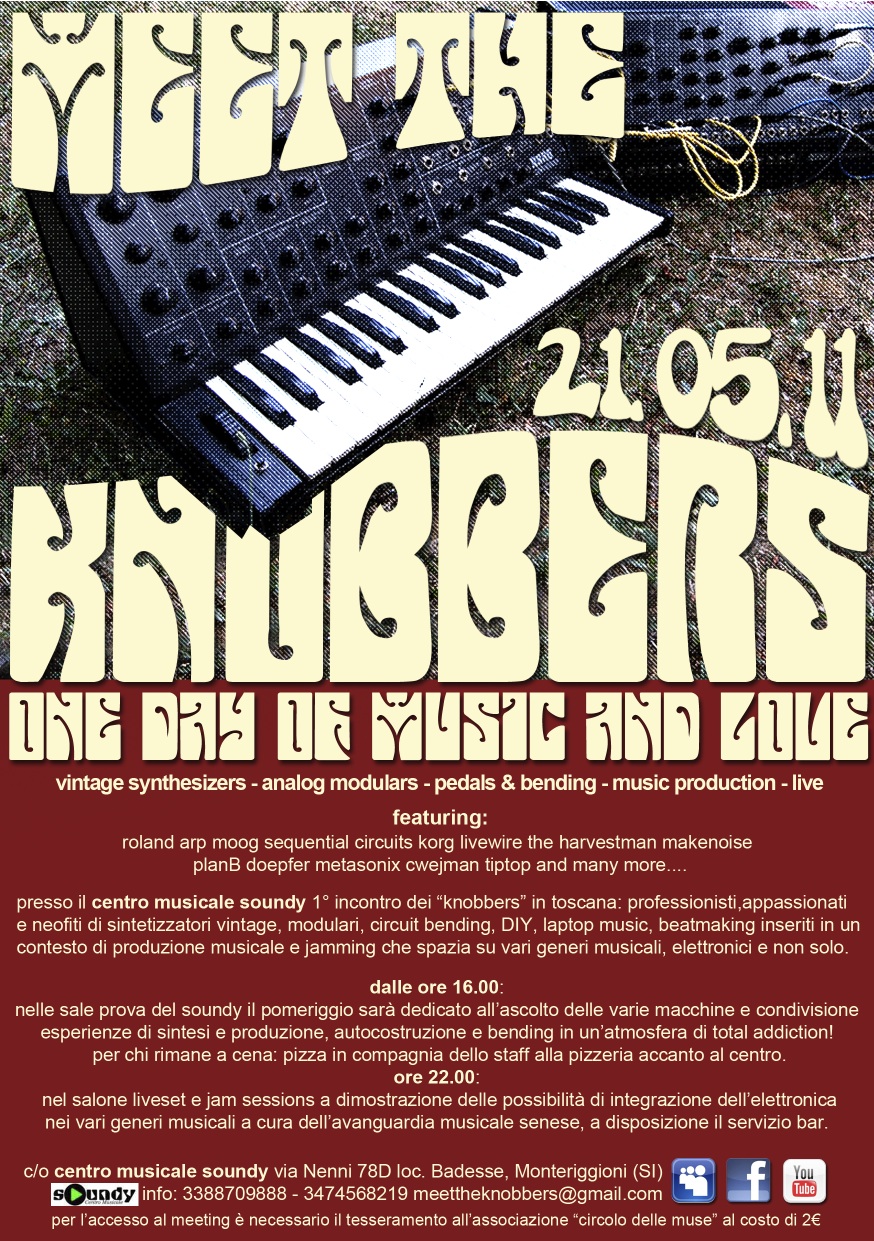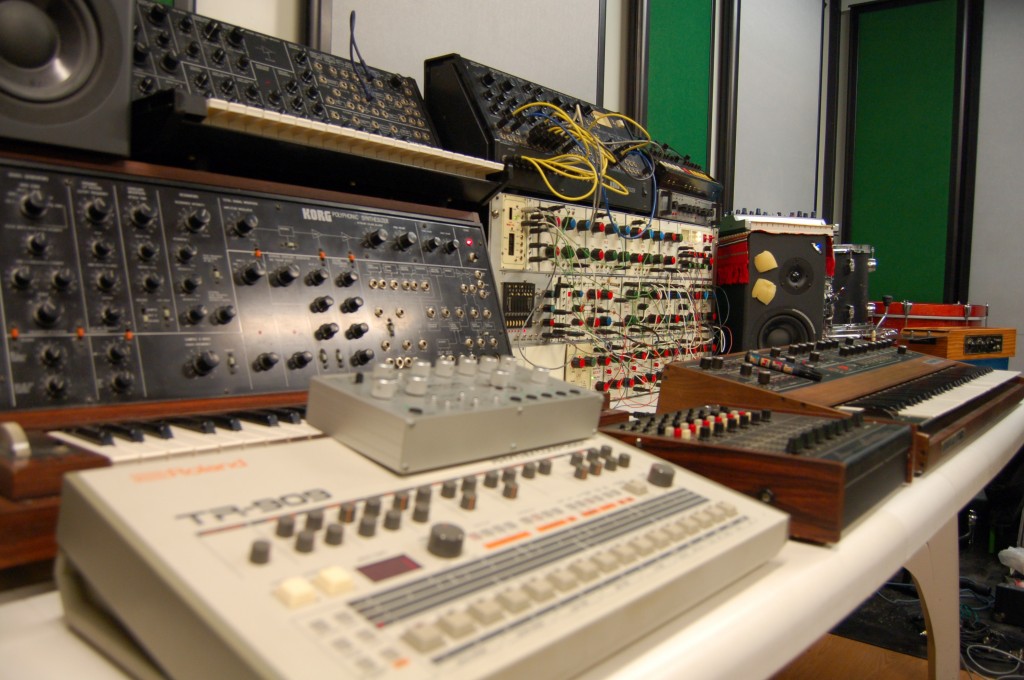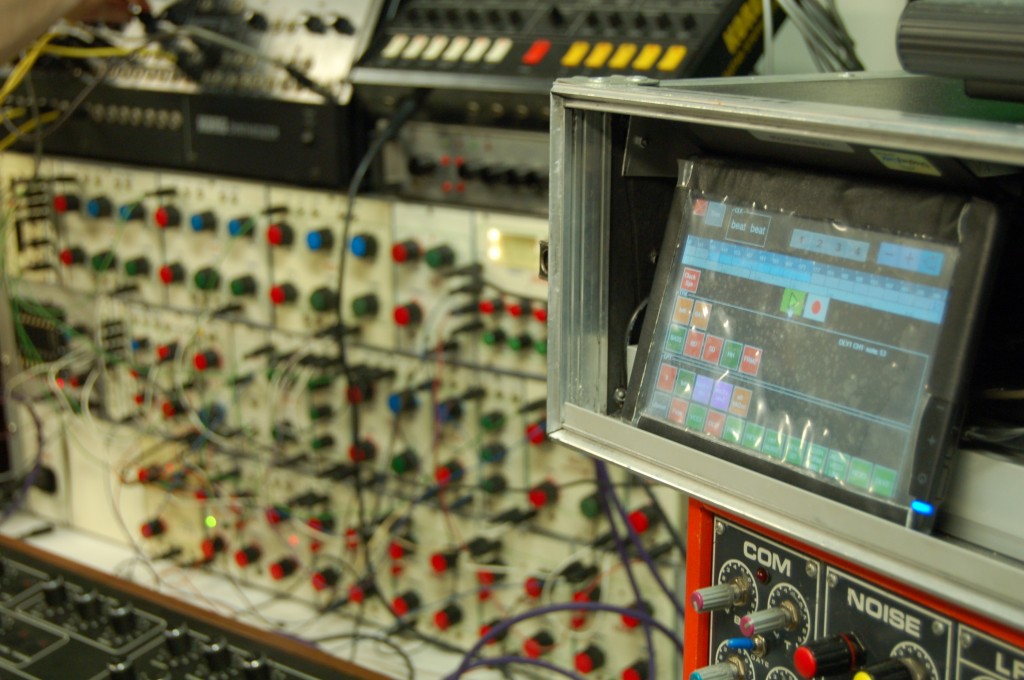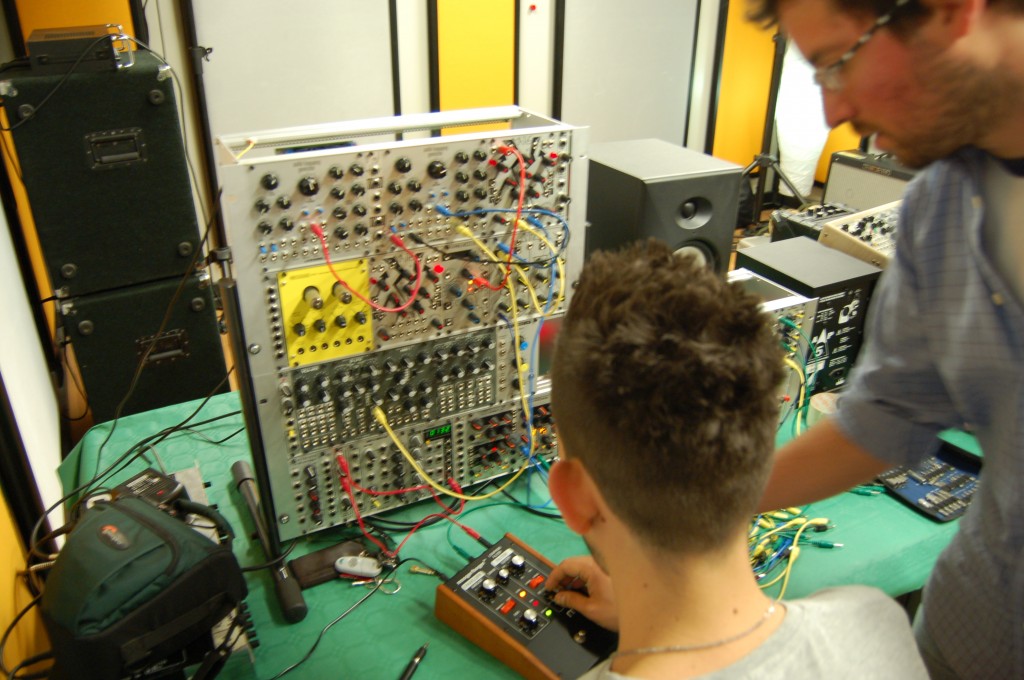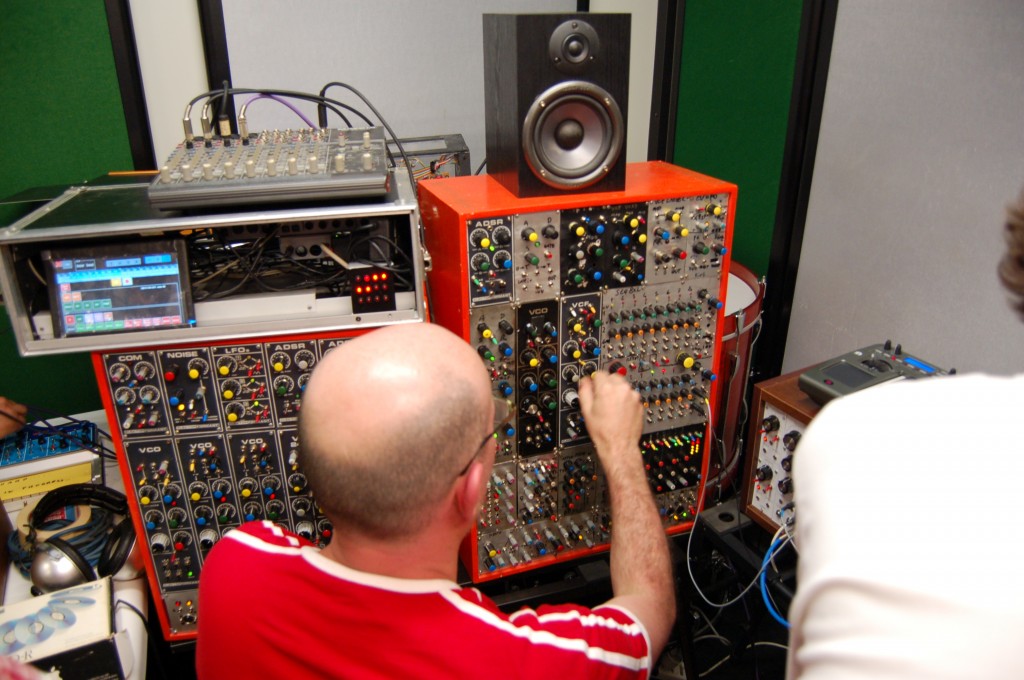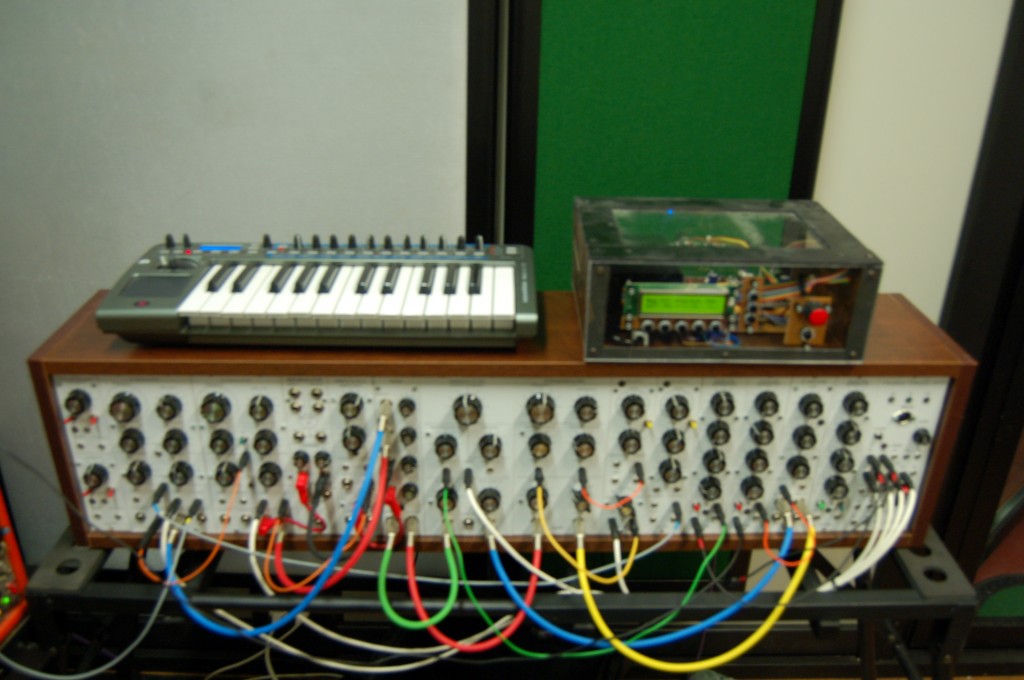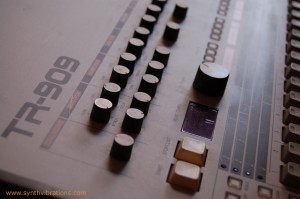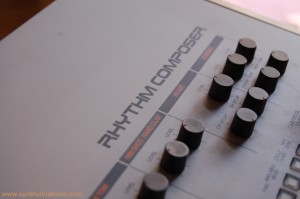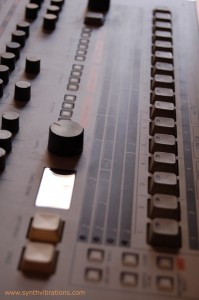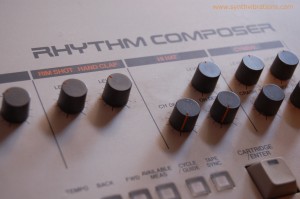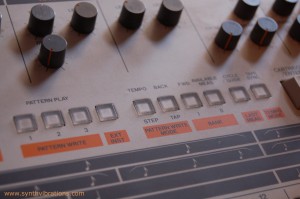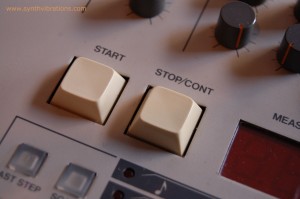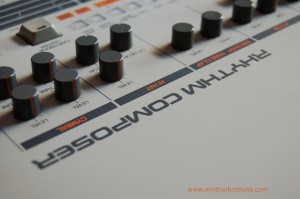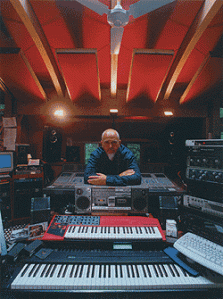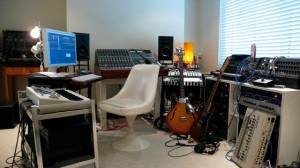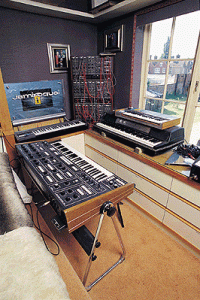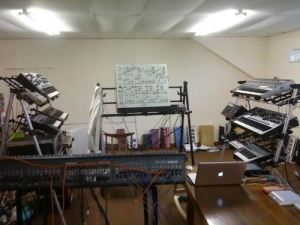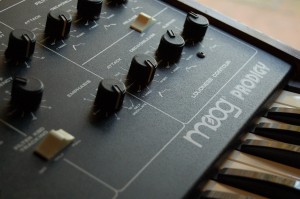
When it came out in the late 70s the Moog Prodigy was the moog attempt to fight the “japanese invasion”, so it was a stripped down version of the minimoog at a competitive price.
It was really popular indeed and was a big american “budget-Mini” till Sequential Circuits made the Pro One.
The structure is quite simple: a 2 syncable VCOs with the classic 24dB moog ladder filter, two ASD/R and a simple lfo.
The two vcos are similar but they have different waveforms and different “feet” settings.
VCO1 has the 32′ and offers Pulse, Saw and Tri waveforms.
VCO2 has the 4′ and TRi, Square and Saw.
The second vco has a detune knob and can be synced to vco1 creating many complex waves (a feature unavailable on the Minimoog).
Using the Pitch Wheel with the sync on , the wheel “move” only the VCO2 creating big alterations in the waveform content.
Than there is a mixer/vca part , the Filter with cutoff, (env)Amount, and Emphasis (resonance) and the two envelope ADS/ASR.
The LFO is quite simple and offers square and tri waves with a rate control that can go from 0.3Hz to 30 Hz, not the faster or slowest lfo, but really useful.
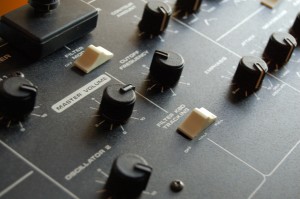
The most interesting part of this synth is the behaviour of the filter that is indeed the strengh of all moog synths, a really organic, warm and brilliant sounding!
It sounds always balanced, the resonance can get quite acid and never get thin.
The vcos are really capable, rich and armonic over all the audio spectrum, and the sync is a top notch feature in a simple synth because the vcos interact very well creating complex waveforms that sound always usable.
The behaviour of the envelopes is really interesting, they are snappy and fast, but they move in a really organic and “natural” way.
Even the 3 stage concept is not limitating at all.
All in all this is a great vintage synth that is always quite cheap compared to the always rising prices of Minimoogs, and though it may seem quite basicv/simple, getting in depth with it can lead to a very wide range of sounds, some even typical “Prodigy trademarks” , not only mini emulations…
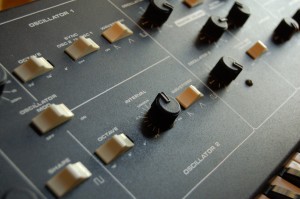
Compared to the new analogs (moogs and moog clones) the prodigy has a particular fashion that set this synth aside from the new generation, and it’s all about the sound!
While the Prodigy has a raw but harmonic sound that’s always present and creamy, today’s synths are more “bright” but not brilliant, the sound is cleaner and more defined, when you turn the cut off down they are smooth and quite flat/static , while the prodigy always seems to oscillate wildly under its wood and metal case…
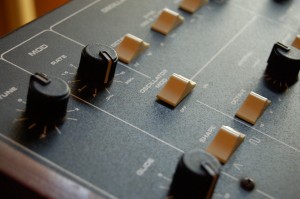
My prodigy has two interesting MODS.
- FILTER FM : the vco2 can modulate the filter frequency creating wild sounds, from vocal-like textures to noise or drones.
- CV-GATE MOD : a standard cv-gate interface instead of the moog s-trig.
I chose to have this mod because my model (an early BX336) did not have any control socket.
I’ll provide photos of the mods in a future post 😉 , stay tuned!
